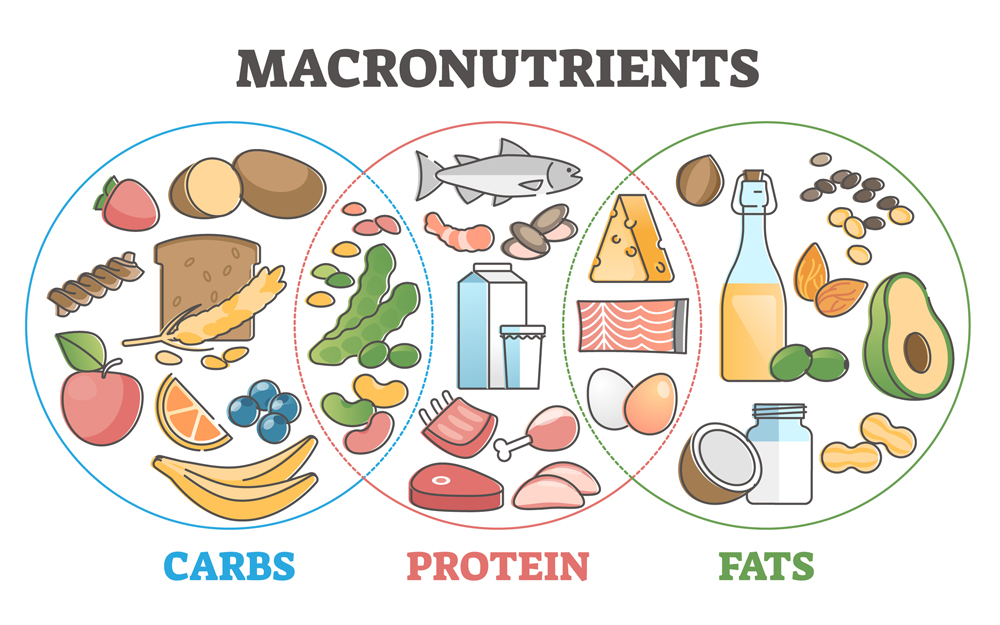When it comes to maintaining a healthy diet and achieving your fitness goals, understanding macronutrients is essential. Macronutrients, often referred to as “macros,” are the three main categories of nutrients that provide us with energy: carbohydrates, proteins, and fats. By grasping the significance of each macronutrient and incorporating them into a well-balanced diet plan, you can optimize your nutrition and pave the way to a successful and sustainable approach to healthy living.
Carbohydrates: Fueling Your Body
Carbohydrates are the primary source of energy for our bodies. They are commonly found in foods such as grains, fruits, vegetables, and legumes. When consumed, carbohydrates break down into glucose, which is used by our cells as fuel. Incorporating complex carbohydrates, like whole grains and fiber-rich foods, into your diet can provide sustained energy throughout the day.
Proteins: Building Blocks of Life
Proteins play a crucial role in repairing and building tissues, enzymes, hormones, and antibodies. They are composed of amino acids, which are essential for numerous bodily functions. Including lean sources of protein, such as poultry, fish, beans, and tofu, in your meals can help support muscle growth, repair, and overall health.
Fats: Essential for Vital Functions
Contrary to popular belief, fats are an important part of a healthy diet. They provide energy, support cell growth, protect organs, and help absorb essential vitamins. Opting for unsaturated fats found in foods like avocados, nuts, and olive oil can have beneficial effects on heart health. However, it’s important to consume fats in moderation, as they are calorie-dense.
Creating a Well-Balanced Diet Plan
Now that we have a basic understanding of macronutrients, it’s crucial to create a well-balanced diet plan that incorporates all three categories in appropriate proportions. The key is to focus on nutrient-dense foods that provide a wide range of vitamins, minerals, and antioxidants.
Start by identifying your individual needs and goals. Consider factors such as age, gender, activity level, and any specific dietary requirements or restrictions. Consulting with a registered dietitian can be immensely helpful in tailoring a diet plan that meets your unique needs.
When designing your meals, aim to include a variety of colorful fruits and vegetables, whole grains, lean proteins, and healthy fats. Focus on portion control and mindful eating to maintain a healthy balance. Remember, it’s not just about the quantity of food but also the quality.
Transitioning Towards a Healthier Lifestyle
Transitioning towards a healthier lifestyle involves more than just understanding macronutrients. It’s important to adopt a holistic approach that includes regular physical activity, hydration, and sufficient rest. Additionally, being aware of portion sizes, reading food labels, and practicing mindful eating can greatly contribute to your overall well-being.
By incorporating regular exercise into your routine, you can enhance the benefits of a balanced diet. Engaging in activities such as cardiovascular exercises, strength training, and flexibility exercises can improve your fitness level, boost metabolism, and promote overall wellness.
Hydration is also key to maintaining optimal health. Drinking an adequate amount of water throughout the day helps regulate body temperature, aids digestion, and supports various physiological functions. Aim to drink at least eight glasses of water daily and increase intake during periods of physical activity or in hot weather.
Sufficient rest and quality sleep are often overlooked but are crucial for overall well-being. Aim for seven to nine hours of uninterrupted sleep each night to allow your body to repair and rejuvenate. Lack of sleep can lead to imbalances in hormones, increased appetite, and reduced cognitive function.
In addition to the above factors, paying attention to portion sizes is essential. It’s easy to overeat, especially with the abundance of tempting food options available. Practice portion control by using smaller plates, being mindful of hunger and fullness cues, and avoiding distractions while eating. By practicing mindful eating, you can savor your meals, make healthier choices, and prevent overindulgence.
Lastly, familiarize yourself with food labels and ingredient lists. Reading and understanding food labels can help you make informed choices about the products you consume. Look for ingredients that are natural and avoid processed foods high in added sugars, unhealthy fats, and artificial additives. Opt for whole, unprocessed foods as much as possible to maximize nutrient intake.
Conclusion
In conclusion, understanding macronutrients is just the first step towards achieving a successful diet plan. By incorporating carbohydrates, proteins, and fats in appropriate proportions, you can fuel your body, support essential functions, and maintain overall health. However, it’s important to remember that a well-balanced diet is just one component of a healthy lifestyle.
Transitioning towards a healthier lifestyle involves adopting a holistic approach that includes regular physical activity, proper hydration, sufficient rest, portion control, mindful eating, and reading food labels. By embracing these practices, you can optimize your diet plan, enhance your well-being, and work towards achieving your health and fitness goals.
Remember, small changes implemented consistently over time can lead to significant improvements in your overall health and quality of life. So, start today by making conscious choices and taking proactive steps towards a healthier, happier you.
